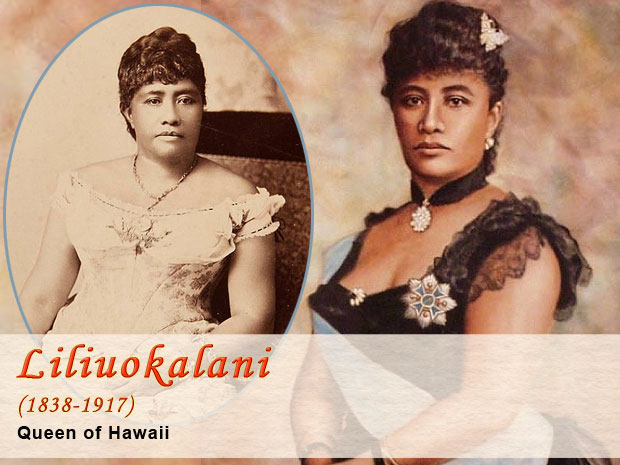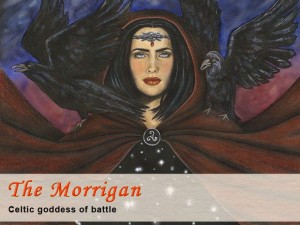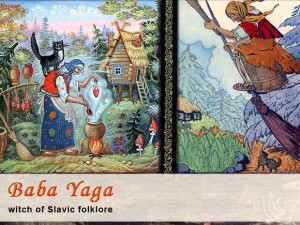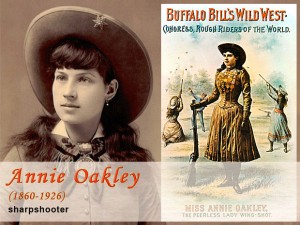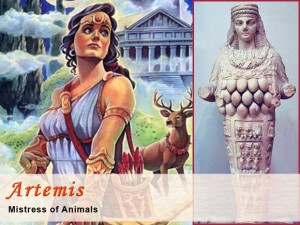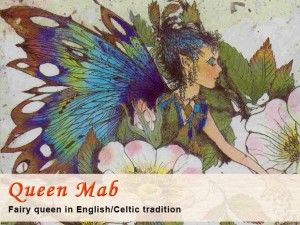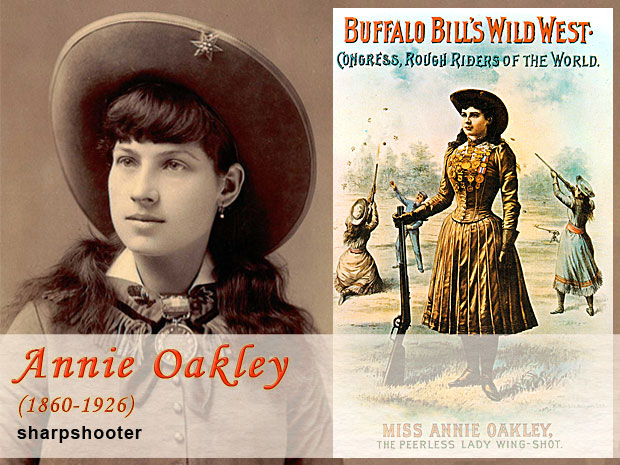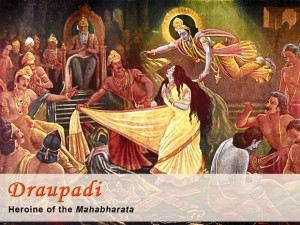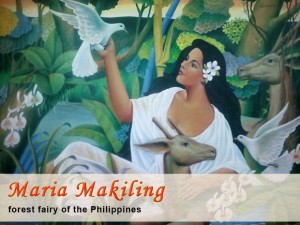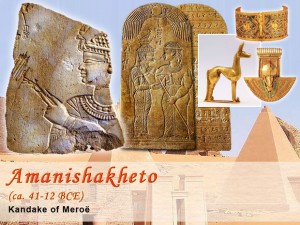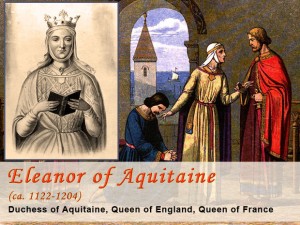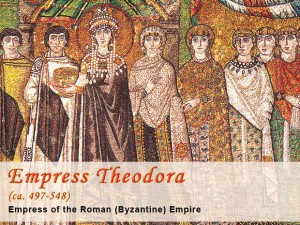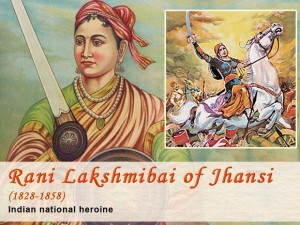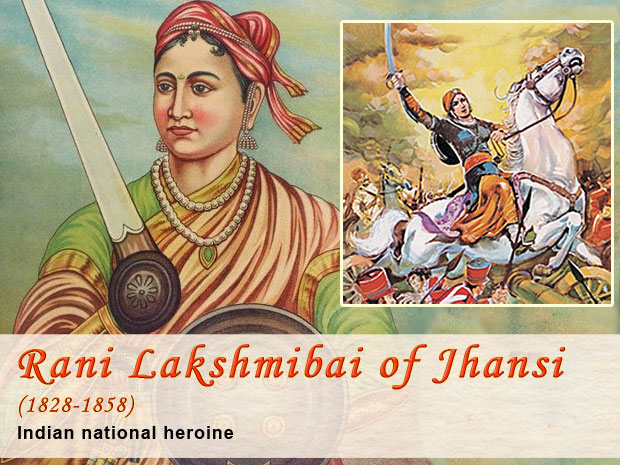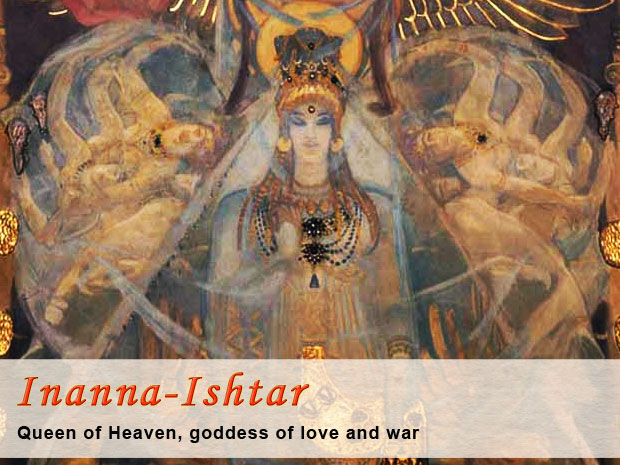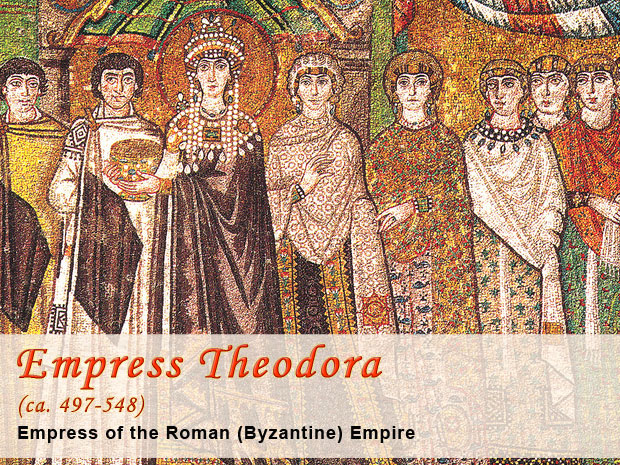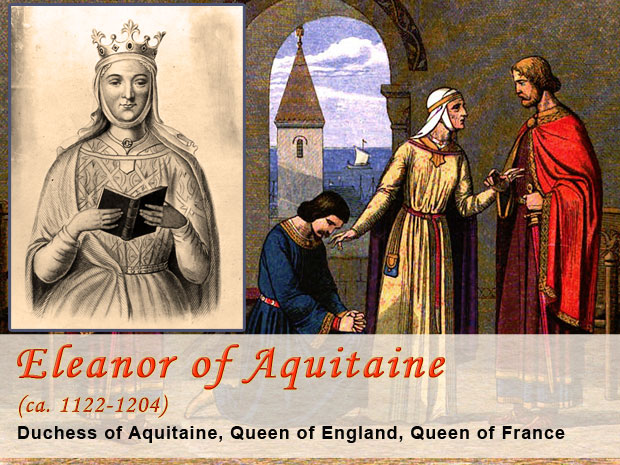(Following on from Part 1.)
Okay, you know how I said we would use the results in the unofficial poll to break any ties in the official vote? That’s exactly what happened.
There were three names tied for 7th place in the Kickstarter vote: Queen Liliuokalani, Empress Theodora, and Catherine the Great. Liliuokalani and Theodora were neck and neck throughout the whole week of voting, and I kept expecting it to break for one of them. Instead they ended up in a three-way tie with Catherine the Great. (Eleanor of Aquitaine was next in line, just a few votes back, in case you’re wondering.)
And thus we turned to the unofficial poll. No tie there: it was Liliuokalani all the way. She was really popular with our Facebook friends and fans, garnering almost twice as many votes as any other queen. So we’re bowing to the Hive Mind and naming Queen Liliuokalani as our number 7.
However, I promise that Empress Theodora and Catherine the Great will be first in line for next season!
The results are in for the 7 new costumes! Today I’m going to tell you about the first 6 because those are easy; tomorrow I’ll tell you about the 7th place tiebreaker. Ready?
The first 6 are easy because they were far and away the favorites. Interestingly, the voting pattern was the same both with the official Kickstarter votes and in the popular straw poll. I think that means the Hive Mind has spoken. So, here are the top 6:
- The Morrigan. Huge winner all around.
- Baba Yaga. A close second!
- Annie Oakley. A surprise to me, since I really didn’t know she would be this popular. But she’s way popular.
- Hedy Lamarr. This one does not surprise me.
- Artemis. Nor does this one.
- Queen Mab. Yay! Yay! Yay! (Can you tell I was personally rooting for this one?)
Here are the links to their Costume Candidate profiles:
Tune in tomorrow for part 2, when I’ll tell you about the fight to the death for 7th place.
Thank you, everyone, for voting! The links to the surveys are now disabled and the votes have been counted. The response has been very exciting, in more ways than one. (Tiebreaker! Tiebreaker! Tiebreaker!) I’ll post the results as soon as I can either Tuesday or Wednesday. Stay tuned!
The official ballots have gone out to all our Kickstarter backers to vote on the 7 new costumes their support is making possible (that’s in addition to the 10 costumes already announced and the two special commissions). We’re also inviting all of our friends and fans to vote in an unofficial straw poll that’s open to the public:
Just because it’s unofficial doesn’t mean it’s unimportant. We’ll use the results to break any ties in the official vote and to plan for new costumes next season. So please vote!
Here are links to the 21 Costume Candidates we’ve profiled over the past several months:
Notable Women:
Goddesses and Legends:
Queens:
Thanks to our Kickstarter campaign for 2013, we’re adding 19 new costumes this season, 7 of which our backers and supporters will get to vote on. This series of posts is designed to briefly introduce the many notable women and legendary figures we’ll be considering. Voting will take place spring/summer of 2013.
Queen Liliuokalani was the last reigning monarch of the Kingdom of Hawaii. She came to the throne in 1891 as a pro-native, pro-woman advocate for her people, and quickly found herself at odds with the American businessmen (sugar barons, pineapple planters) who wanted to annex the islands to the United States. Liliuokalani had the support of the native Hawaiians, but the Americans had the support of an armed U.S. warship in the harbor and a landing force of U.S. troops. In 1893 they overthrew the monarchy, deposed the queen, and established a Provisional Government with Sanford Dole (of the pineapple family) as president. By 1898 the annexation of Hawaii to the United States was complete.
Queen Liliuokalani conducted herself with great dignity throughout the whole sorry episode, which included a show trial and temporary imprisonment. She made a number of attempts to resolve the situation via diplomatic overtures to Washington, but the tide of imperialism was against her. In retirement she devoted herself to writing, scholarship, charity, and above all, music. Liliuokalani was a gifted musician and composed over 150 pieces, including the most famous Hawaiian song in the world: “Aloha Oe.”
Think we should add a Queen Liliuokalani costume to Take Back Halloween? If you missed our Kickstarter campaign you can still become a supporter and get to vote on the new costumes.
Thanks to our Kickstarter campaign for 2013, we’re adding 19 new costumes this season, 7 of which our backers and supporters will get to vote on. This series of posts is designed to briefly introduce the many notable women and legendary figures we’ll be considering. Voting will take place spring/summer of 2013.
Will Rogers called her “the greatest woman rifle shot the world has ever produced.” The Associated Press dispensed with the female qualifier in her obituary, calling her “perhaps the greatest shooter of all time.” Sitting Bull famously nicknamed her “Little Sure Shot.”
The woman could shoot. She could hit any target, it seemed, no matter how tiny. She could shoot the heart out of a playing card, or, if the card was held sideways, split it in half. She could shoot the ash off a cigarette and the cork out of a bottle. She could shoot upside down, backwards, looking over her shoulder in a mirror, anything. And she was consistent: one of her fellow sharpshooters said it was simply impossible to beat her. She was like a machine.
Annie Oakley was born poor, and originally took up shooting as a way to feed her family. Her incredible skill eventually made her the star of Buffalo Bill’s Wild West Show and an international sensation. At the height of her career she may have been the most famous woman in America. She used her celebrity for good, raising money for widows and orphans, paying for young women to attend college, and championing some rights for women. Some rights; not all. She was opposed to suffrage, for example. But she was fully in favor of women being allowed to do the things that she herself had excelled at: shooting guns and earning money. She argued for women to receive equal pay for equal work, to compete in sports, to be trained in the use of firearms, even to go to war as sharpshooters. She believed that women were strong and, aside from tasks requiring significant upper body strength, capable of doing anything a man could do—and doing it just as well. Given how transgressive her life already was, maybe the suffrage thing was just a bridge too far.
Think we should add an Annie Oakley costume to Take Back Halloween? If you missed our Kickstarter campaign you can still become a supporter and get to vote on the new costumes.
Thanks to our Kickstarter campaign for 2013, we’re adding 19 new costumes this season, 7 of which our backers and supporters will get to vote on. This series of posts is designed to briefly introduce the many notable women and legendary figures we’ll be considering. Voting will take place spring/summer of 2013.
Rani Lakshmibai of Jhansi was a heroic young queen (rani) who fought in the Indian Rebellion of 1857. She didn’t set out to be a rebel, but the appalling behavior of the British left her little choice. Her problems began when her husband, the ruler of the princely state of Jhansi, died in 1853. Rani Lakshmibai was supposed to succeed him as regent, but instead the British East India Company horned in and absorbed Jhansi into their domains. When the Rebellion started a few years later, the British assumed the deposed Rani was in cahoots with the insurgents. Actually she wasn’t, at least not at first. But having been marked out by the colonial powers as a dangerous rebel, she rose to the occasion.
Lakshmibai personally mustered a volunteer army of 14,000 men and women to defend Jhansi. She rallied both Muslims and Hindus to her banner, united people of all castes, and encouraged women to leave purdah. She herself was strikingly bold and brave, riding her horse with the reins between her teeth and a sword in each hand. Even her enemies admitted that she was a gifted leader and administrator. When she was killed in battle on June 17, 1858, the rebellion effectively collapsed.
Today the Rani of Jhansi is revered as India’s first great figure in the struggle for independence. Her memory lives on in movies, art, literature, place names, and countless equestrian statues across the country.
Think we should add a Rani of Jhansi costume to Take Back Halloween? If you missed our Kickstarter campaign you can still become a supporter and get to vote on the new costumes.
Thanks to our Kickstarter campaign for 2013, we’re adding 19 new costumes this season, 7 of which our backers and supporters will get to vote on. This series of posts is designed to briefly introduce the many notable women and legendary figures we’ll be considering. Voting will take place spring/summer of 2013.
It’s not true about the horse. Catherine the Great had plenty of paramours, but her private life was no weirder than the average king’s. The only difference was that she was a queen, not a king, and so what we might call the Empress Theodora Effect kicked in (powerful woman = male panic = lurid gossip, rumors of depravity, blah blah blah). So ignore the stories. Yes, Catherine had a lot of boyfriends. No, they weren’t equines.
Silliness aside, Catherine the Great was one of the most influential rulers in Russia’s history. She came to the throne in a coup and then stayed there for 30 years, expanding the nation’s borders and turning it into an international powerhouse. She was in many ways very enlightened—or as enlightened as an absolute monarch can be—and successfully promoted education, modernization, and reform. (Not for serfs, though; no relief for them. Catherine was as enlightened about serfs as Thomas Jefferson was about slaves.) During her reign Russia finally became, in the words of a contemporary, “a European country,” with an educated, sophisticated elite and the status of a world power. What Peter the Great had dreamed of, Catherine the Great made happen.
Ironically, Catherine’s awful son Paul was so resentful of his mother that when he finally succeeded her as tsar, he passed a law forever barring women from the throne.
Think we should add a Catherine the Great costume to Take Back Halloween? If you missed our Kickstarter campaign you can still become a supporter and get to vote on the new costumes.
Thanks to our Kickstarter campaign for 2013, we’re adding 19 new costumes this season, 7 of which our backers and supporters will get to vote on. This series of posts is designed to briefly introduce the many notable women and legendary figures we’ll be considering. Voting will take place spring/summer of 2013.
Before Freyja or the Morrigan, before Venus or Aphrodite, before Artemis or Athena or Demeter or Persephone, there was Inanna. She was the great Mesopotamian Queen of Heaven and Earth, the goddess of love, fertility, and war. In her earliest form, perhaps 6,000 years ago, she may have been the supreme giver of life and civilization. Inanna was what the Sumerians called her; their Semitic neighbors, the Akkadians, called her Ishtar. As time went on the Sumerian language was entirely replaced by Akkadian, and thus Ishtar is the name that endured. It was as Ishtar that she was worshiped by the later Babylonians, the Assyrians, and the Canaanites, who pronounced her name something like Ashtart. (In the Bible she is called “Ashtoreth,” which scholars think was a deliberate play on words, combining “Ashtart” with the Hebrew word “bosheth,” meaning abomination.) When the Greeks came along, they rendered her name as Astarte.
So who was this amazingly long-lived goddess whose cult lasted for 4,000 years? In the early days she was probably the most important deity in people’s lives, the main god they prayed to and thought about. The earliest known religious literature was dedicated to her, and texts like The Descent of Inanna (describing her journey to the underworld, death, and return to life after three days) indicate that she was the focus of profound theological contemplation. She was pictured as the eternally youthful embodiment of the life force: perpetually a virgin (signifying independent female power) yet full of passion and enjoying many lovers. The fecundity of fields, flocks, and humans were in her care. In her role as the morning and evening star (the planet Venus), she was the queen of heaven, with the zodiac as her girdle. She controlled the arts of civilization, and her mystical marriage to the king was what gave him sovereignty. As society became more warlike, so did she, and by Babylonian times she was positively bloodthirsty, exulting in the death of the king’s enemies.
Over the millennia the focus shifted more and more to the goddess’s relationship with her son-consort, Tammuz. The original story of Inanna’s descent to the underworld gradually became a story about Ishtar resurrecting Tammuz from a sacrificial death. It was this latter form of the myth that permeated the ancient Mediterranean world; traces of it appear in the Greek story of Demeter and Persephone and in the Hellenistic mystery cults of a dying and resurrected god (which provided the theological climate in which Christianity emerged). Meanwhile, the love goddess aspect of Inanna-Ishtar survived in the classical pantheon as Aphrodite-Venus. And thus this originally Sumerian goddess is, in many ways, still with us. When you look at Botticelli’s Venus on the half shell or contemplate a statue of the Virgin and Child, you’re seeing a faint reflection of the great Mesopotamian Queen of Heaven.
Think we should add an Inanna-Ishtar costume to Take Back Halloween? If you missed our Kickstarter campaign you can still become a supporter and get to vote on the new costumes.
Illustration credit: The painting of Astarte is from the mural Triumph of Religion (1895) by John Singer Sargent.
Thanks to our Kickstarter campaign for 2013, we’re adding 19 new costumes this season, 7 of which our backers and supporters will get to vote on. This series of posts is designed to briefly introduce the many notable women and legendary figures we’ll be considering. Voting will take place spring/summer of 2013.
The problem with Theodora is that her biographer hated her guts. She was probably the most important woman in the history of the Roman Empire, but the main thing people seem to know about her is that she started out, allegedly, as a prostitute. But did she? The stories about Theodora’s early life all came from one very bitter misogynist dude named Procopius, who wrote his scurrilous Secret History after Theodora’s death. It’s probably true that Theodora was born into a circus family and worked as an actress, but Procopius’s more lurid details should definitely be taken with several large shakers of salt. After all, every powerful woman in history, from Hatshepsut to Hillary Clinton, has been accused of sexual shenanigans. It’s how men express their panic.
We’re on firmer ground when we assess Theodora’s political career. Her husband, the Emperor Justinian, thought the world of her, and the two of them effectively ruled as co-regents. Theodora may actually have been the more capable of the two; her name is on all the legislation, she received envoys, she corresponded with foreign rulers, she put down rebellions, and so on. What’s really cool is that she was a remarkably vigorous proponent of women’s rights. Women’s legal status in the Roman Empire was almost non-existent, and Theodora set out to change that. She reformed the laws so that women could own property, daughters could inherit, and widows could recover their dowries; she made it illegal for a man to kill his wife over adultery; she made rape a crime punishable by death; she gave mothers guardianship of their children; she outlawed sex trafficking and sex slavery; and she created safe-haven homes for former prostitutes. Yay, Theodora! No wonder Procopius hated her.
Think we should add an Empress Theodora costume to Take Back Halloween? If you missed our Kickstarter campaign you can still become a supporter and get to vote on the new costumes.
Thanks to our Kickstarter campaign for 2013, we’re adding 19 new costumes this season, 7 of which our backers and supporters will get to vote on. This series of posts is designed to briefly introduce the many notable women and legendary figures we’ll be considering. Voting will take place spring/summer of 2013.
If you grow up reading Greek mythology as a kid, the image you get of Artemis is rather one-dimensional. She’s the eternal tomboy, the ever-virginal goddess of the hunt, roaming through the woods in her short tunic and boots, beholden to no man. Twin sister to Apollo, she’s the moon to his sun (figuratively speaking; Artemis and Apollo were linked to, but not quite the same as, the celestial bodies).
All that’s true enough, as far as Classical Greek mythology goes, but the full picture is more complex. Artemis was also the patron of women in childbirth, and outside of Greece was worshiped with statues covered in breasts (or eggs, or gourds, or whatever the heck those things are supposed to be). Archaic Greek art shows her surrounded by bees and other fertility symbols, and ancient folk rituals connected her with motherhood, the moon, and untamed nature. The Romans identified her with Diana, an Italian goddess with a similar portfolio (hunting, childbirth, the moon), while in the Near East she was identified with Cybele, the Great Mother. To moderns it all seems a bit of a mess—what does a virgin tomboy hunter have to do with childbirth?—but to the ancients it made sense. They seem to have been working from the same mental checklist: nature, animals, childbirth, virgin, moon…yep, that’s Her!
Some scholars believe that Artemis was ultimately descended from a Neolithic Great Goddess, particularly in her aspects as Mistress of Animals and Eternal Virgin (signifying self-possessing female power). Whether this was the case or not, people do seem to have had a shared concept of an animal-accompanied goddess who combined perpetual virginity with childbirth. It’s interesting to note that when Christianity came along, shrines to Artemis/Diana were transformed into shrines to the Virgin Mary.
Illustration credits: The gorgeous modern painting on the left is Artemis by Raine Szramski.
Thanks to our Kickstarter campaign for 2013, we’re adding 19 new costumes this season, 7 of which our backers and supporters will get to vote on. This series of posts is designed to briefly introduce the many notable women and legendary figures we’ll be considering. Voting will take place spring/summer of 2013.
(Voting update: Eleanor didn’t make the cut for this season, but if you’re looking for an Eleanor of Aquitaine costume, check out our Marie de France page for resources. It’s exactly the same time period—in fact the two women may have been sisters-in-law.)
Eleanor of Aquitaine was probably the most powerful woman in medieval Western Europe. It’s certainly hard to think of anyone else who might fill the bill. In her own right she was Duchess of Aquitaine and Countess of Poitiers, ruling over a large part of what is now France. Her marriage to Louis VII made her Queen of France, in which capacity she rode at the head of the Second Crusade. After divorcing Louis she married Henry Plantagenet—soon to ascend the throne as Henry II of England—and thereby became Queen of England and co-regent of the vast empire created from their combined territories. In her spare time she sponsored the greatest literary revival of the High Middle Ages; she also masterminded a military rebellion against Henry that landed her in prison for 16 years. After Henry’s death it was Eleanor more than anyone who held things together: she was the de facto ruler of England for her son King Richard the Lionheart (who was off on Crusade) and did everything she could to keep her son King John from making a total mess (which he did after she died). In the words of the nuns of Fontevrault, where Eleanor was buried, she “surpassed almost all the queens of the world.”
Think we should add an Eleanor of Aquitaine costume to Take Back Halloween? If you missed our Kickstarter campaign you can still become a supporter and get to vote on the new costumes.

